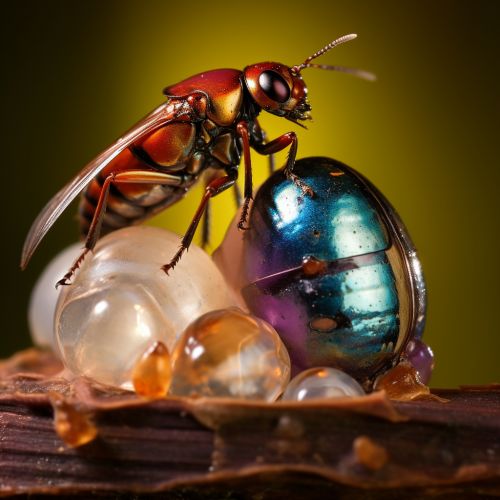Insect Life Cycle
Introduction
Insects, a class of arthropods, are the most diverse group of animals on the planet, with over a million described species. A significant part of their success lies in their complex and varied life cycles. This article will delve into the intricate details of the insect life cycle, focusing on the stages of development, the process of metamorphosis, and the survival strategies employed by these fascinating creatures.
Life Cycle Stages
Insect life cycles consist of several stages: the egg, the larval or nymph stage, the pupal stage (in some species), and the adult stage.
Egg
The first stage of an insect's life cycle is the egg. Insect eggs are incredibly diverse in size, shape, and structure, reflecting the wide range of environments in which insects live. Some insects lay their eggs in water, others in soil, and still others on plants or in the bodies of other organisms. The egg stage can last from a few days to several months, depending on the species and environmental conditions.
Larval or Nymph Stage
After the egg hatches, the insect enters its larval or nymph stage. Insects that undergo complete metamorphosis, such as butterflies, moths, beetles, and flies, have a larval stage. In contrast, insects that undergo incomplete metamorphosis, such as dragonflies, grasshoppers, and true bugs, have a nymph stage.
Larvae and nymphs generally look quite different from adults and often live in different habitats and have different feeding habits. This stage is primarily a time of growth, and the insect may molt several times as it increases in size.
Pupal Stage
Insects that undergo complete metamorphosis also have a pupal stage. During this stage, the insect is usually immobile and often encased in a protective covering. Inside the pupa, the insect undergoes a dramatic transformation, with its body structures breaking down and reorganizing into the form of the adult insect.
Adult Stage
The final stage of the insect life cycle is the adult stage. Adult insects are typically mobile, capable of reproduction, and have fully developed structures such as wings and reproductive organs. The adult stage can last from a few days to several months, depending on the species.


Metamorphosis
Insects are known for their ability to undergo metamorphosis, a process of dramatic physical change that occurs between life stages. There are two main types of insect metamorphosis: complete and incomplete.
Complete Metamorphosis
Insects that undergo complete metamorphosis have four distinct life stages: egg, larva, pupa, and adult. The larval stage looks very different from the adult and typically has a different lifestyle and diet. This allows larvae and adults of the same species to exploit different resources and reduces competition between life stages.
Incomplete Metamorphosis
Insects that undergo incomplete metamorphosis have three life stages: egg, nymph, and adult. The nymph stage looks similar to the adult but is smaller and lacks wings and reproductive structures. Nymphs typically live in the same habitats and have similar diets as adults.
Survival Strategies
Insects employ a variety of survival strategies throughout their life cycle. These include strategies for avoiding predation, dealing with environmental challenges, and ensuring successful reproduction.
Avoiding Predation
Insects use a variety of strategies to avoid predation. These include camouflage, mimicry, and the production of defensive chemicals. Some insects also have physical structures such as spines or tough exoskeletons that deter predators.
Dealing with Environmental Challenges
Insects have evolved a variety of adaptations to deal with environmental challenges. For example, many insects enter a state of dormancy, known as diapause, during unfavorable conditions. Some insects also have the ability to tolerate extreme temperatures or desiccation.
Ensuring Successful Reproduction
Insects employ a variety of strategies to ensure successful reproduction. These include complex mating rituals, the production of large numbers of offspring, and in some cases, parental care of offspring.
